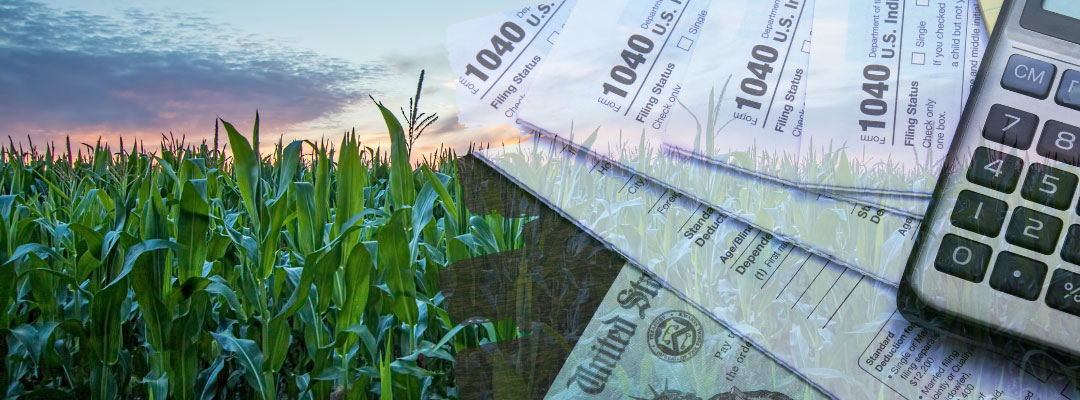Most farmers right now are not thinking about taxes, let alone tax management. Many are still harvesting crops and beginning to think about the next season, but it is also time to start the office work and meet with your tax professional. A November or early December appointment with your tax professional will give you more tax management options before year-end.
Update your accounting of transactions for the year, and arrive prepared with the necessary reports that detail the following:
- All revenue and sources of income.
- All expenses with descriptions.
- All capital asset sales and purchases (with details).
- If an asset was traded, bring complete invoices and sales documents including information on the trade, the trade-in value, etc.
- Related inventory of breeding, milking, or draft livestock.
- Bank loan payments detailing principal and interest portions.
- An estimate of additional revenue expected, along with what might be deferred if necessary.
- An estimate of upcoming expenses, and an idea of what expenses might be shifted (deferred or prepaid) across tax years.
- Any health insurance premiums paid out of pocket, may be eligible for a self-employer credit/deduction.
- All draws that have been taken.
Preparing the above reports will help your tax professional determine an approximate tax liability for this year and allow for a discussion of different tax management strategies. Remember that tax management is not about how to get out of paying taxes but should be about how to move as much income through the tax system as possible at the least expensive tax rate possible.
Common tax management may include multiple tools or provisions. Work with your tax professional and ask about some of the following basic strategies:
- Putting money into a retirement account with tax-preferred treatment such as a Traditional IRA or some 401k accounts.
- Putting money into a Health Savings Account.
- Making a commodity donation to a house of worship or other charitable organization may provide a greater tax benefit than a cash donation.
- Utilizing prepays is a common way to lower the farm’s taxable income but check with your tax preparer about specific restrictions and requirements.
- Paying the accrued interest of any debt at the end of the year.
- Utilizing any remaining Net Operating Loss (NOL) that can be carried over. It is important to remember that the NOL can only offset up to 80% of the taxable income for the farm.
- Use depreciation strategies with caution. Section 179 and Bonus Depreciation allow a farm to rapidly depreciate an asset in a shorter period, up to a single year. However, there are several limitations to these methods and subsequent tax consequences when the asset is sold.
- Income Averaging is a method only available for farms and commercial fishing. It may help you avoid higher income tax brackets in one year if you have previous years with “unused” lower income tax brackets.
Keeping up with accounting and production records throughout the year will make the end-of-year office work easier and less stressful. Having a tax professional that you can trust and is willing to work with you will help a farm meet their goals and reduce tax liability over the long term. Visit ruraltax.org for additional information and publications about taxes, including a 2022 Farm Tax Estimator tool and other information for farms, timberland owners, and landowners.

Dr. Adam J. Kantrovich,
Extension Specialist of Agribusiness and
Director of Clemson Tax School
Kantrovich, Adam. “Year-End Tax Preparation and Management“. Southern Ag Today 2(45.3). November 2, 2022. Permalink

